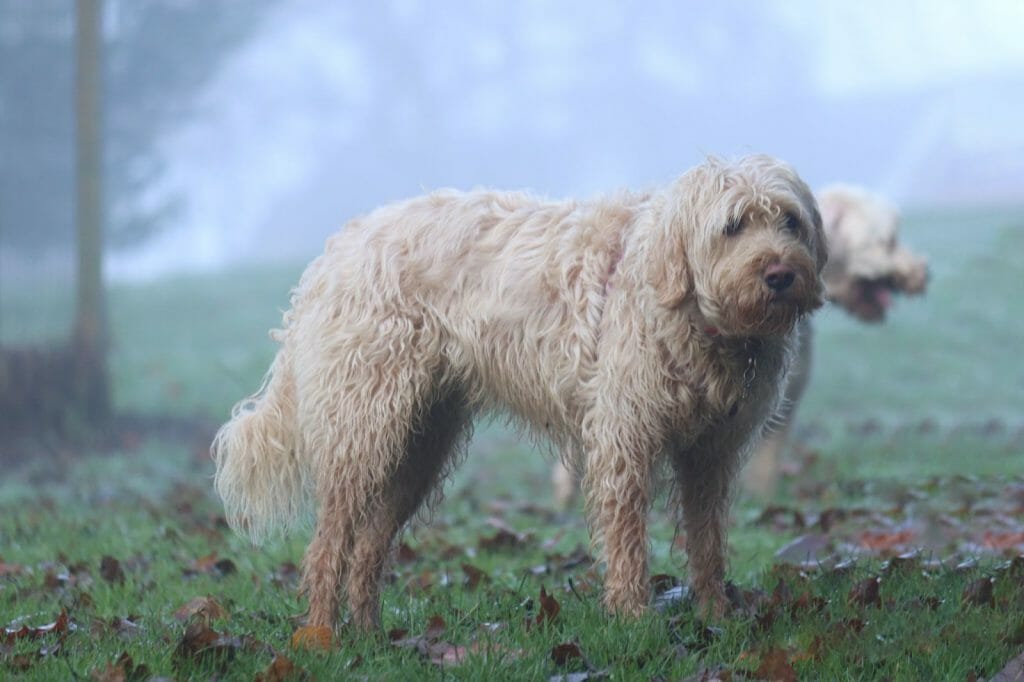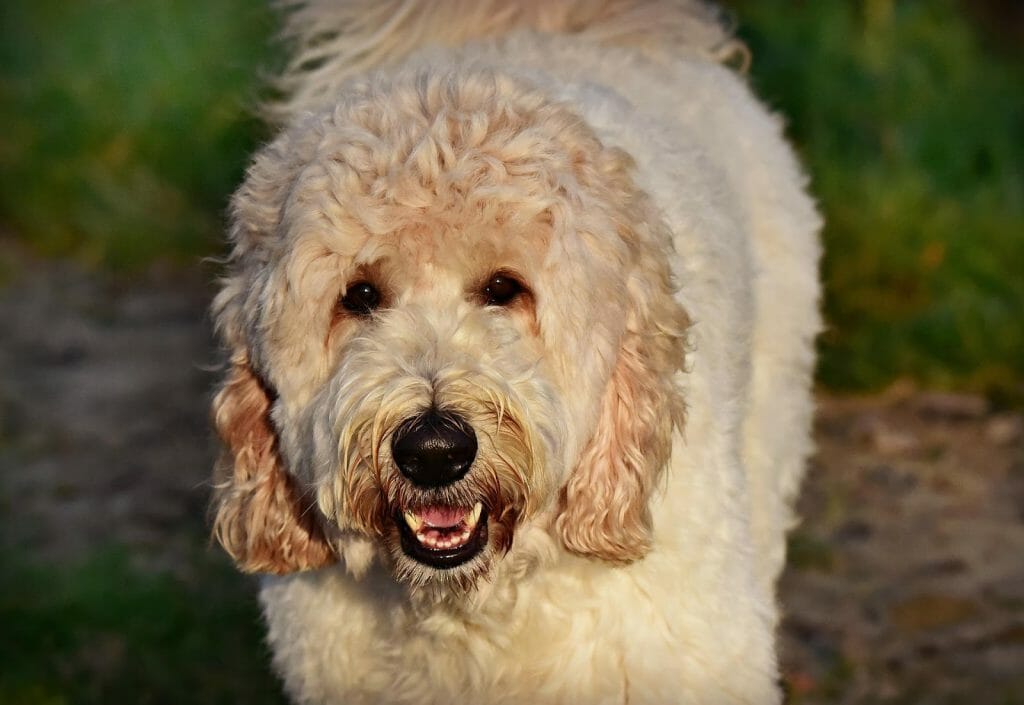Otterhound vs Labradoodle: A Comparison Guide
Otterhounds are often mistaken as designer dogs as they closely resemble the Labradoodles. Both dogs have this goofy expression in tousled coats, which are a real head-turner for passersby.
Among these pooches, the Otterhound is more known for their intelligence, stamina, keen sense of smell, and courage. Meanwhile, Labradoodles lean more to the affectionate and gentle side, making them a popular dog for families with kids. Torn between these two dogs? Find out which one can adjust to your lifestyle. Let’s dive in!
Table of Contents
Breed Origins
Otterhound
As the name suggests, Otterhounds were primarily bred in England to eliminate otters who would go out and steal fish and eventually threaten the livelihood of fishermen. They’ve been around since the 12th century. Otter-hunting then became a sport that was remarkably enjoyed by King John of Magna Carta and other wealthy royals.
Despite being such an old breed, Otterhounds are deemed rare. Around the world, there are only 1,000 dogs of this kind left. Before, there was a lot of speculation regarding how this dog came about. Its lineages were presumed to have been a combination of:
- Bloodhound.
- Welsh Harrier.
- English Bulldog.
- Southern Hound.
- Griffon Nivernais.
- Old Water Spaniel.
- English Foxhound.
Learn more about the breed: Otterhound 101: The Essential Guide
Labradoodle
Labradoodles are hybrid designer dogs from Australia. They’re a cross between the Labrador Retriever and the Poodle– a successful breeding program Wally Conron achieved in 1989. The first-ever Labradoodle was named Sultan.
Sultan was set to give Labradoodles the title of being the perfect guide dogs there are. They’re also hypoallergenic, which is a delight for hypersensitive dog lovers. When Sultan became a guide dog for a woman in Hawaii, people started noticing how impeccable the dog was.
Currently, the AKC doesn’t recognize them as a breed, but people are working hard to make them a distinct, note-worthy pooch.
Read more about the Labrador Retriever parent: Labrador Retriever 101: The Essential Guide
Size, Appearance, & Coloring
Otterhound


The wooly Otterhound is a large dog that’s 24 to 27 inches tall and 80 to 115 pounds heavy. They look dignified, gentle, and shaggy thanks to their long, furry coats that are described to be waterproof. This comes in various attractive coat markings and colors that include:
- Tan.
- Gray.
- Black.
- White.
- Lemon.
- Wheaten.
This is matched up with their webbed feet that help them hunt well both on land and in water. Both ears hang down loosely and are set below eye level. The eyes come in either brown or hazel, while their large nose can be black or brown.
Labradoodle


As medium-sized dogs, Labradoodles can reach 50 to 75 pounds with a height of 22 to 25 inches. These measurements may vary depending on what Poodle variation was used. After all, Poodles can either be:
- Toy.
- Miniature.
- And standard.
In most cases, Labradoodles are wooly in the coat, and this can be 4 to 6 inches long. They look more like a Poodle because of this, but the gentle expression comes from the Labrador Retriever parent breed. The eyes are hazel or brown, and the nose can be black or brown.
Aside from being a particolored pooch, Labradoodles can also come in various shades of:
- Red.
- Blue.
- Gray.
- Black.
- Cream.
Temperament
Otterhound
Otterhounds are naturally smart dogs. You can teach them just about anything, from letting them pick their toys at the store to opening doors. However, since they’re big and strong, these dogs tend to be stubborn and challenging to handle.
It’ll be easier, though, if you start their training early. Include as well the socialization part since they used to hunt down otters. Their predatory instinct can be a problem if you have small pets at home, but early exposure to small animals can mellow their prey drive.
With proper upbringing, Otterhounds become devoted to their families. They make the best companion for kids thanks to their gentle and easy-going nature.
Labradoodle
Labradoodles are gentle and fun to the core. They do well with kids, but they tend to be a bit silly sometimes. Their interaction with toddlers and even with smaller housepets have to be monitored to avoid mishaps.
With their energy and high-spiritedness, they may unintentionally knock them over. Aside from that, it’s worth telling you that they’re highly sociable. They love people, which is why they’re not aggressive dogs. They’ll benefit a lot from regular training and socialization, so be sure to give them drills to accomplish each day.
Exercise Needs
Otterhound
Let your Otterhound burn their energy every day. They have high vigor, which means they’re better off moving than laying around. At least 45 minutes of walks, runs, and other fun activities can satisfy their thirst for adventure.
Leaving them bored can make Otterhounds look for ways to entertain themselves. And owners wouldn’t find it pleasing at all. They’ll chew off your valuables and do other mischievous things to eliminate boredom.
Labradoodle
Generally, Labradoodles have loads of energy. They need to release this daily to prevent them from exhibiting destructive behaviors. At least 30 to 60 minutes each day will keep them emotionally, mentally, and physically improved, especially if you really plan out their activities.
Bring them out for a walk, or make them your companion for your hike. They’ll love it as well if you take them to the beach during the summer.
Grooming Requirements
Otterhound
Help your Otterhound’s coat stay at a top-notch condition. Every week, make sure they’re gently brushed all over using a soft bristle brush. Their guard hairs are quite rough, so you won’t have to worry about matting.
The undercoat, however, should be given more attention as it’s dense. It can get tangled when it’s left unbrushed for too long. Check as well for any signs of skin or ear infections. This breed loves to be in the water, and they’re prone to such issues.
Labradoodle
Labradoodles aren’t high-maintenance dogs despite their long, curly coat. But, taking care of it depends on which coat type the Labradoodle has, and they are:
- Wool-like.
- Fleece-like.
- Single-coated.
Weekly brushing will help a lot in your Doodle’s appearance and health. After all, matted coats can be painful for them. If needed, brush them as many times a week. Also, don’t forget to look at other areas and ensure their nails are trimmed and their ears, teeth, and anal glands are clean.
Health Problems
Otterhound
Be aware of the typical health issues that may strike your Otterhound pooch. They’re generally healthy, but they’re not immune to diseases. Bring them to the vet if concerning signs and symptoms show as they could mean your dog has:
- Hip dysplasia.
- Gastric torsion.
- Hypothyroidism.
- Congenital heart defect.
Labradoodle
Labradoodles are robust dogs since they’re hybrid. Yet, they’ll still acquire certain health issues at one point in their lives. This includes:
- Epilepsy.
- Ear infections.
- Elbow dysplasia.
- Diabetes mellitus.
Breed Popularity
The AKC has set up a breed popularity list that ranks all recognized pooches. Here’s how both dogs are doing:
Otterhound: 182nd
Labradoodle: Indefinite (Not a recognized breed.)
You may also want to check out: How Many Dog Breeds Are There in the World? 10 Groups of Canine That Exist
